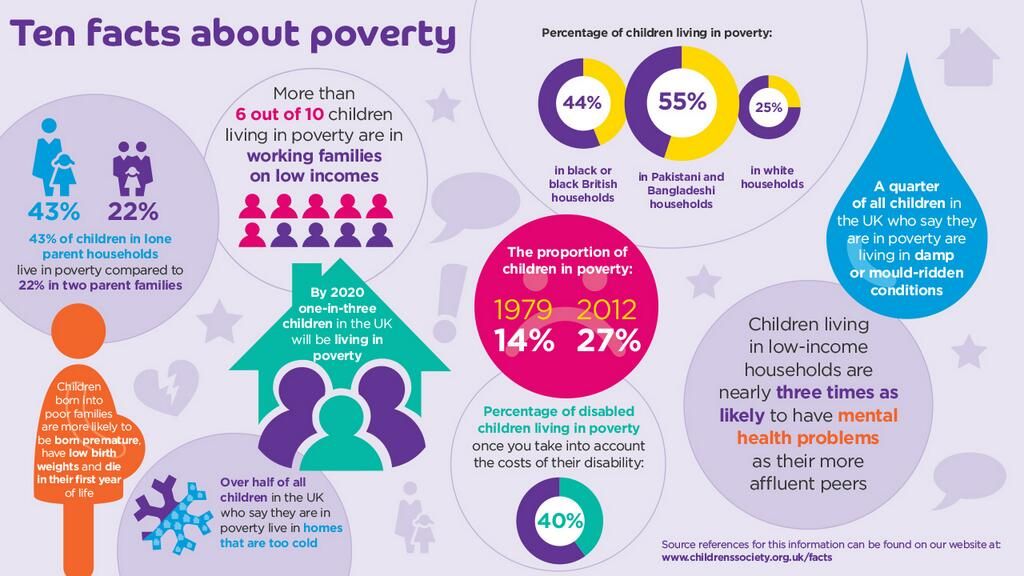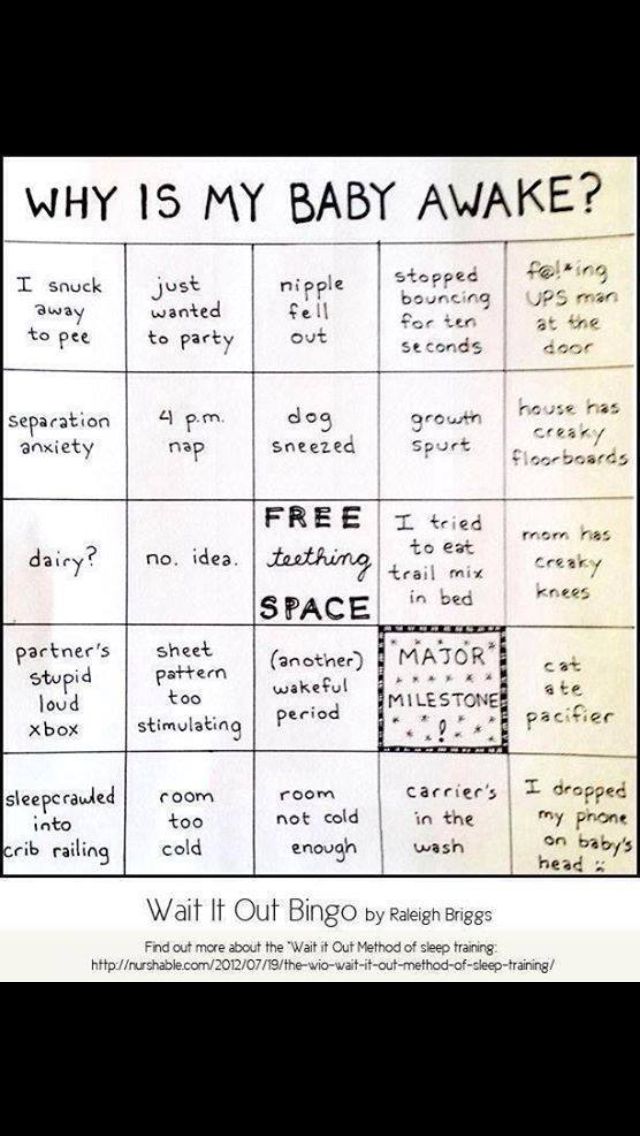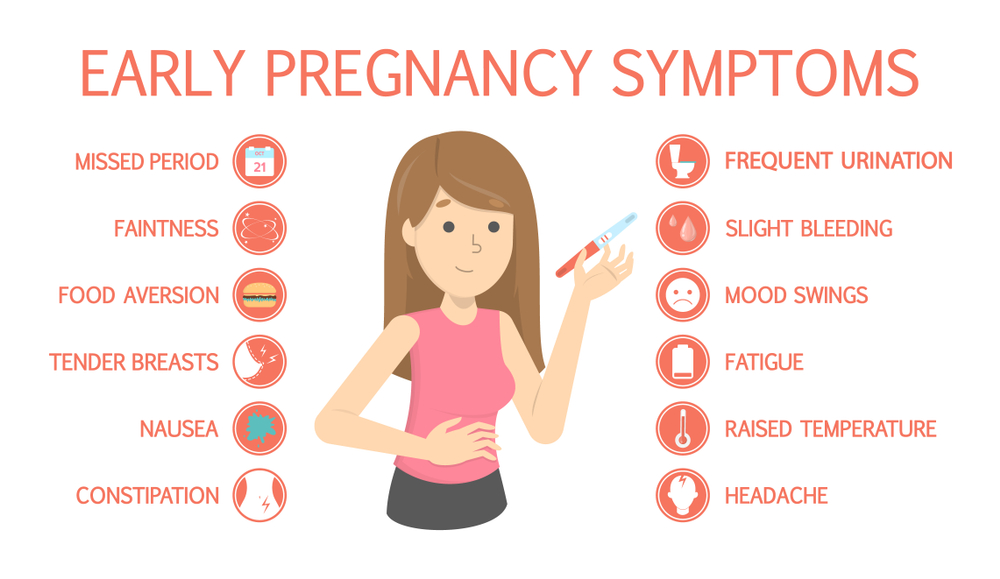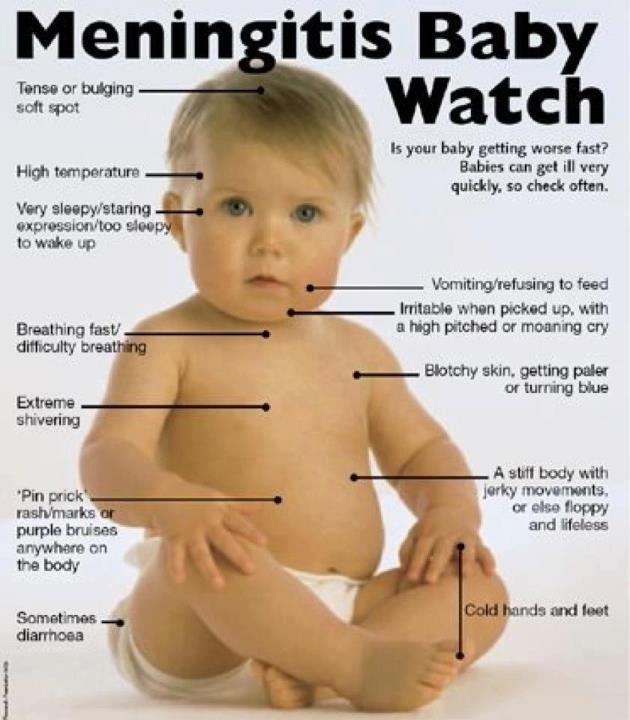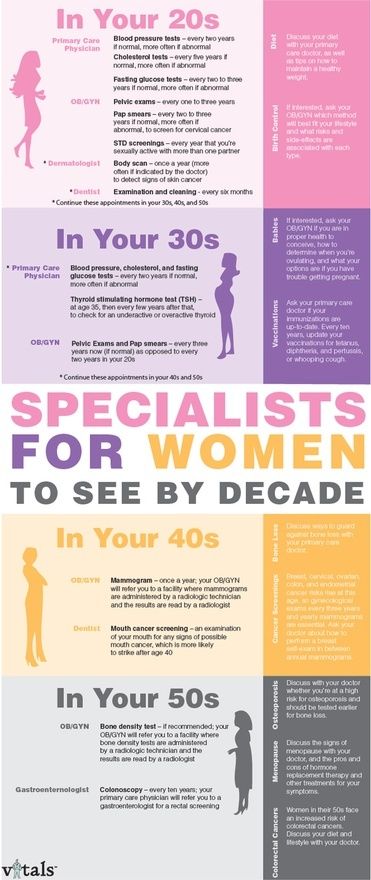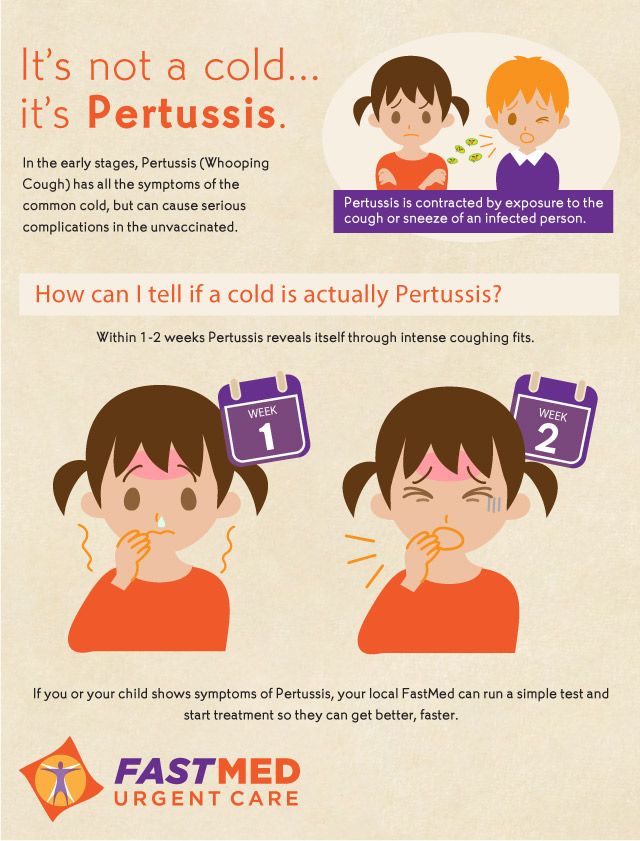How to store sterile baby bottles
Formula Feeding FAQs: Preparation and Storage (for Parents)
Whether you plan to formula feed your baby from the start, want to supplement your breast milk with formula, or are switching from breast milk to formula, you probably have questions.
Here are answers to some common questions about formula feeding.
Do I Need to Sterilize My Baby's Bottles?
Before the first use, sterilize nipples and bottles in boiling water for 5 minutes.
After that, you don’t have to sterilize your baby's bottles and supplies each time you feed your baby. Do wash bottles and nipples in hot, soapy water (or in the dishwasher) after every use. You can get a store-bought countertop or microwaveable sterilizer, but it’s not necessary.
How Do I Prepare My Baby's Bottles?
Carefully follow directions on the label when preparing formula. Most store-bought formula comes in three basic forms:
- powders that you mix with water
- concentrates, which are liquids that you dilute with water
- ready-to-use (or ready-to-feed) liquids that can be poured right into bottles without adding water
Do not add more water than directed, or use formula past its expiration date.
Wash your hands well before preparing and feeding your baby. To mix powders or concentrates, use clean tap water. If you have a well, test the water to see if it’s safe before using it to mix infant formula.
If your tap water is not clean (or your baby has a weak immune system), boil it for at least 1 minute to kill germs. Let the water cool to room temperature before using it to mix formula. You also can use bottled water. Talk to your doctor if you’re concerned that your water is not safe.
Once prepared, the formula is ready to feed to your baby right away without refrigeration or warming. Feed your baby or store the prepared formula in the refrigerator within 2 hours.
How Long Can a Bottle Keep at Room Temperature?
Throw out any prepared or ready-to-feed formula that's been sitting out for 2 hours or more, or within 1 hour from start of feeding.
Can I Save Leftover Formula to Give to My Baby Later?
No, throw away any leftover formula. Harmful bacteria can multiply since the last feeding, which could make your baby sick.
Can I Prepare Formula Ahead of Time?
Some parents make a fresh bottle just before each feeding. But many parents make and refrigerate enough formula ahead of time to use for the day. If you know your baby eats every 3–4 hours, for instance, you can make 6 to 8 bottles to last you all day.
If you prepare formula ahead of time, store it in the refrigerator. You can use pre-made formula for up to 24 hours. Open containers of ready-made formula, concentrated formula, and formula prepared from concentrate can be stored safely in the refrigerator for up to 48 hours. Do not store unmixed powder in the refrigerator.
How Do I Warm My Baby's Bottles?
You don’t have to warm formula before feeding, but some babies may prefer it. To warm bottles, you can:
- Run the bottle under very warm or hot water for a few minutes.
- Put your baby's bottles in a pan of hot water. Be sure to remove the pan from the heat source before putting the bottle in it.
- Use bottle warmers that sit on your countertop at home or are portable.
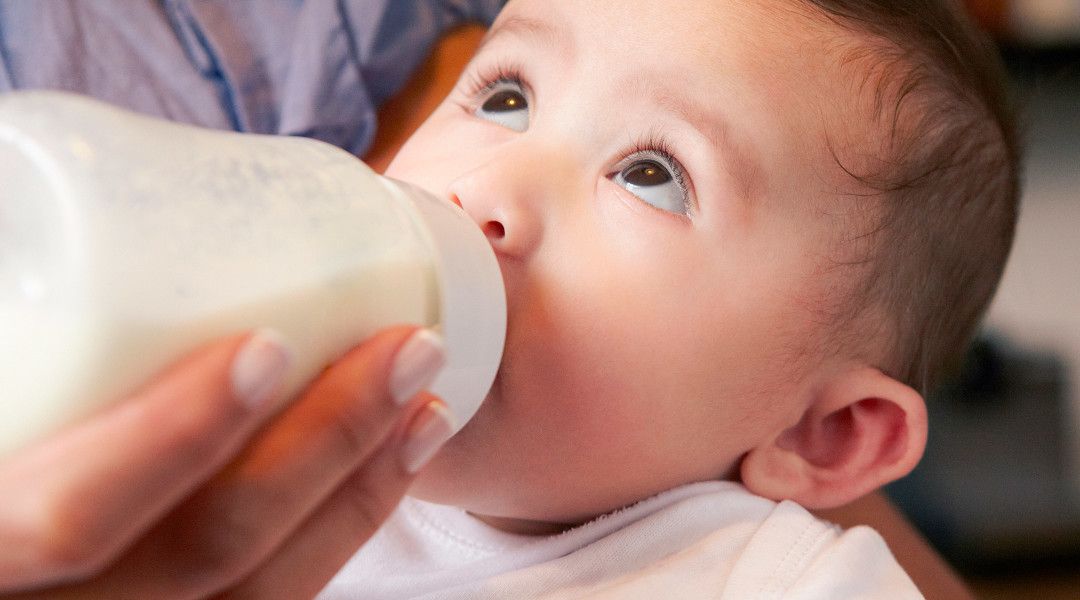
Never use the microwave to warm bottles. It can create dangerous "hot spots" in bottles that can burn your baby’s mouth and throat.
Before warming a bottle, shake it. Then, test the temperature of the formula by squirting a drop or two on the inside or your wrist before feeding your baby. It should be lukewarm (barely warm), not hot.
Cleaning and sterilising baby bottles
Cleaning and sterilising baby bottles | Pregnancy Birth and Baby beginning of content4-minute read
Listen
It’s essential to properly wash and sterilise the feeding equipment when you’re bottle feeding. You'll need to clean and sterilise each bottle, teat and screw cap after every feed. It’s important that you continue sterilising everything until your baby is 12 months' old.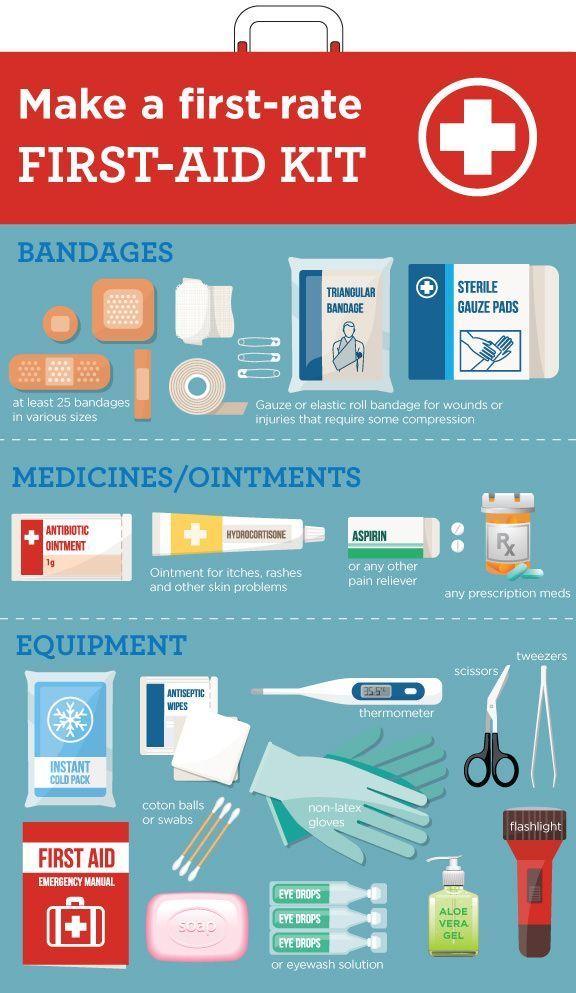
Why is it important to clean and sterilise my baby’s bottles?
Babies have immature immune systems so they aren’t strong enough to fight off a range of infections. One important way to support them in staying healthy is to reduce the chances of their getting sick in the first place.
Milk is the perfect medium in which bacteria can grow. This is why it’s important to sterilise all feeding equipment and keep formula cold until just before feeding your baby.
What equipment needs cleaning and how often?
You need to clean and sterilise all bottle parts, teats and screw caps.
- Separate all parts of the bottle and pull the teat out of its screw cap.
- Use hot water and dishwashing detergent.
- Clean all areas of the bottle with a bottle brush, including the thread where the cap screws on.
- Remove any milk still sitting in the teat or the hole with a teat brush.
- Squeeze hot, soapy water through the teat hole, then do the same with clean water to rinse the teat.
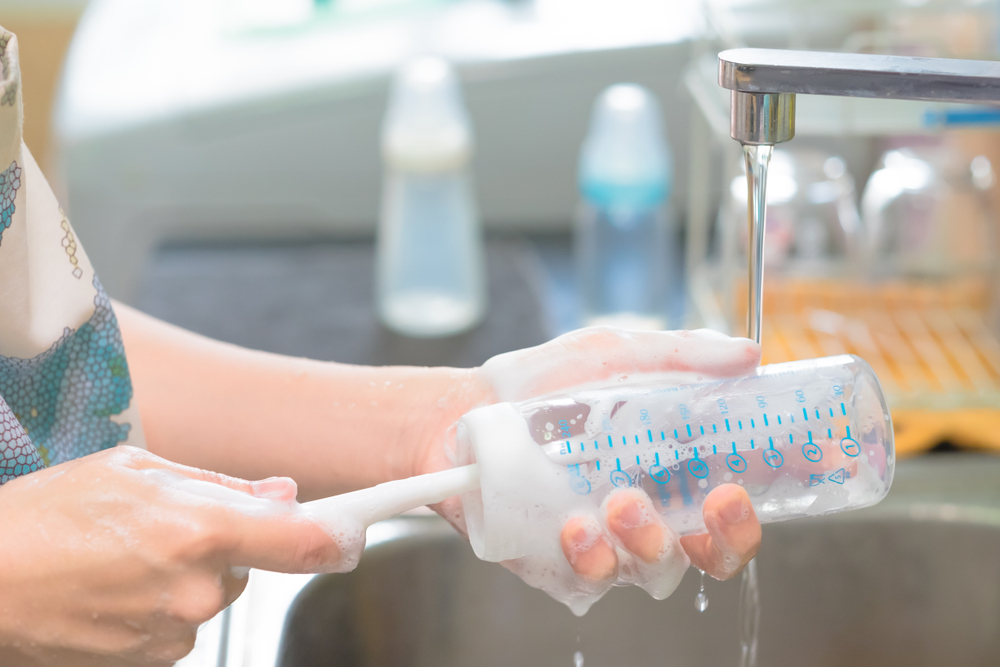
- Make sure to rinse the bottles and equipment well.
Get a new bottle brush once the bristles are worn. They need to be stiff enough to remove all the milky residue from the inside of the bottle.
How to sterilise feeding equipment
Even if bottles and teats look clean, they might still carry germs to your baby so it’s essential to sterilise your feeding equipment properly.
There are 3 ways to do this: boiling, steam sterilisation and chemical sterilisation.
If you’re breastfeeding and only need to sterilise a bottle occasionally, the boiling method may be good enough. It’s also cheaper than buying a steam steriliser. If you’re expressing and/or bottle feeding, then a steam steriliser might be the best option.
The boiling method
- Put all parts of the cleaned bottle, including teats, in a large saucepan.
- Cover the equipment with tap water.
- Make sure all air bubbles are out of the bottles and that they are fully submerged under the water.

- Bring the water to the boil.
- Boil for 5 minutes.
- Let the feeding equipment cool in the saucepan before taking it out.
- Place all the feeding equipment in a clean container and put it in the fridge. Make sure the container is covered firmly with a lid.
- You can store everything in the fridge for up to 24 hours.
The steam sterilisation method
Steam sterilisers are popular because they work quickly, are cheap to use and are very effective. They heat water to boiling point and the steam kills the bacteria. Some steam sterilisers are designed to operate in a microwave.
- Place the clean bottles and feeding equipment in the steriliser.
- Make sure there’s enough room between each bottle, teat and screw cap for the steam to circulate around all surfaces.
- Follow the manufacturer’s directions about how much water to add.
- Turn on and push the button to start. If you’re using a microwave steriliser, place the steriliser in the microwave and turn on for the correct time.

- Wait until the sterilisation cycle has finished and the light goes off.
- Store all sterilised feeding equipment in a clean, lidded container in the fridge.
- Sterilise all equipment again if you haven’t used it within 24 hours.
The chemical sterilisation method
Be careful when using chemical sterilisation. Many methods use bleach, which can also bleach clothing and surfaces, and irritate the skin, if spilt.
Antibacterial chemical sterilisation solutions are available in liquid and tablet form. They need to be prepared exactly as directed on the container.
- Make sure you have a container that’s large enough to hold your baby’s bottles and feeding equipment.
- Use the recommended amount of tap water to prepare the sterilising solution.
- Submerge all bottles and feeding equipment in the solution. Make sure there are no bubbles left in the bottles.
- Leave the equipment in the solution for the recommended time – there’s no need to rinse the solution off after sterilisation.
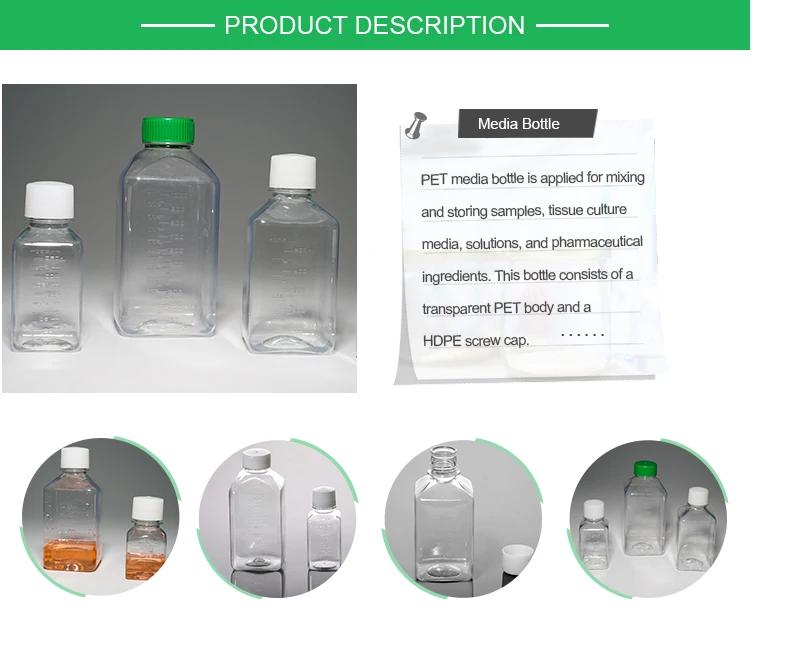
- Throw out the solution after 24 hours and wash out the container before preparing a new batch.
Wash your hands before handling sterilised feeding equipment
Make sure you wash and dry your hands before you handle sterilised bottles and teats. It’s easy to contaminate equipment just by touching it with unclean hands.
Sources:
Child and Youth Health (Feeding your baby), Raising Children Network (Bottle feeding: cleaning and sterilising equipment), Karitane (Bottle Feeding)Learn more here about the development and quality assurance of healthdirect content.
Last reviewed: September 2021
Back To Top
Related pages
- Expressing and storing breast milk
- Making formula – dos and don'ts
- Feeding your baby with formula
- Breastfeeding your baby
Need more information?
Bottle-feeding: cleaning & sterilising | Raising Children Network
Bottle-feeding your baby? Find out what equipment you need – bottles, teats, rings and caps – plus how to clean and sterilise it all.
Read more on raisingchildren.net.au website
Baby formula & bottle-feeding for babies | Raising Children Network
Baby formula is the only safe alternative to breastmilk for the first 12 months. All Australian cow’s milk-based formulas meet strict standards. Read more.
Read more on raisingchildren.net.au website
Breastmilk & breastfeeding: benefits | Raising Children Network
Breastmilk – designed by nature for human babies. Breastmilk and breastfeeding have many health and practical benefits for mothers and babies. Read more.
Read more on raisingchildren.net.au website
Feeding your baby with formula
Learn about formula feeding for your baby, how is it different to breastmilk, why formula feed and what do if your baby is allergic to formula.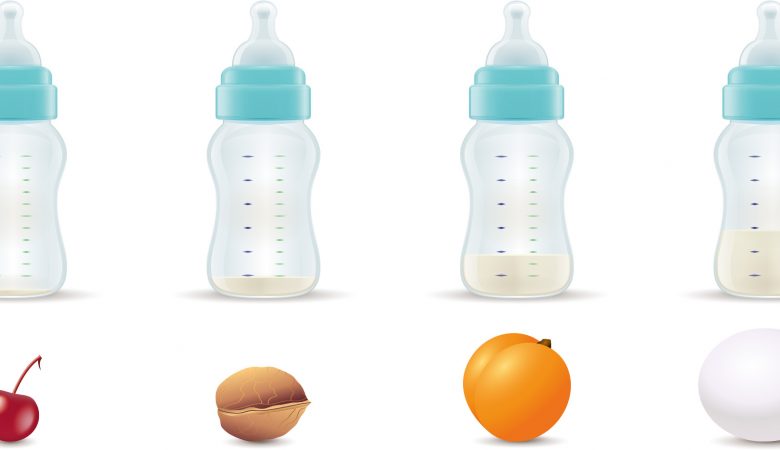
Read more on Pregnancy, Birth & Baby website
Dummies: advantages, disadvantages & tips | Raising Children Network
Dummies soothe some babies and help them settle. But dummies can be a hard habit to break, and babies also need help to manage them. Get tips for dummy use.
Read more on raisingchildren.net.au website
Expressing breastmilk & storing breastmilk | Raising Children Network
You can express breastmilk by hand, or with a manual or an electric pump. Store expressed breastmilk in special bags or containers in the fridge or freezer.
Read more on raisingchildren.net.au website
Disclaimer
Pregnancy, Birth and Baby is not responsible for the content and advertising on the external website you are now entering.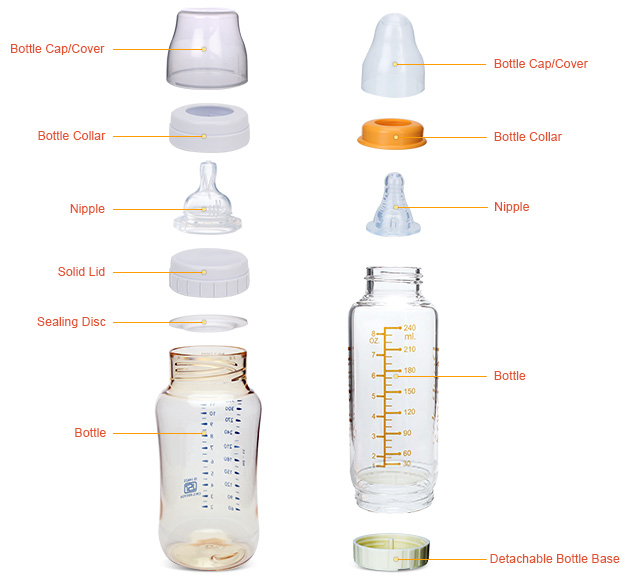
Need further advice or guidance from our maternal child health nurses?
1800 882 436
Video call
- Contact us
- About us
- A-Z topics
- Symptom Checker
- Service Finder
- Linking to us
- Information partners
- Terms of use
- Privacy
Pregnancy, Birth and Baby is funded by the Australian Government and operated by Healthdirect Australia.
Pregnancy, Birth and Baby is provided on behalf of the Department of Health
Pregnancy, Birth and Baby’s information and advice are developed and managed within a rigorous clinical governance framework. This website is certified by the Health On The Net (HON) foundation, the standard for trustworthy health information.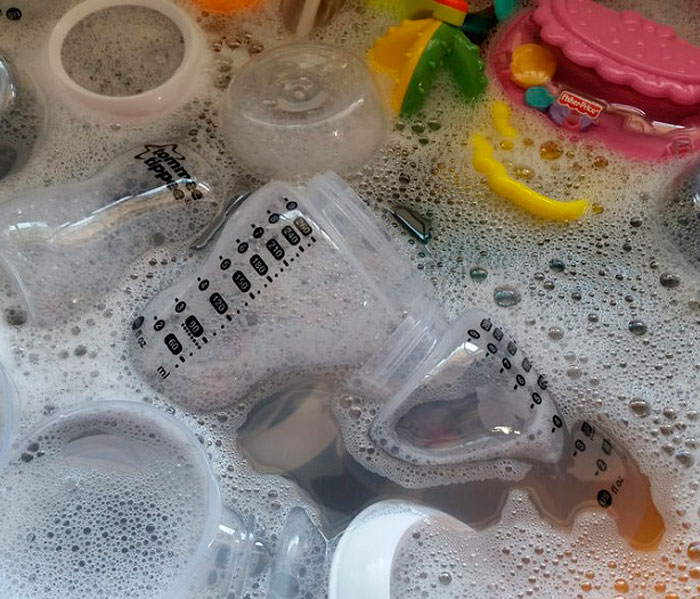
This site is protected by reCAPTCHA and the Google Privacy Policy and Terms of Service apply.
This information is for your general information and use only and is not intended to be used as medical advice and should not be used to diagnose, treat, cure or prevent any medical condition, nor should it be used for therapeutic purposes.
The information is not a substitute for independent professional advice and should not be used as an alternative to professional health care. If you have a particular medical problem, please consult a healthcare professional.
Except as permitted under the Copyright Act 1968, this publication or any part of it may not be reproduced, altered, adapted, stored and/or distributed in any form or by any means without the prior written permission of Healthdirect Australia.
Support this browser is being discontinued for Pregnancy, Birth and Baby
Support for this browser is being discontinued for this site
- Internet Explorer 11 and lower
We currently support Microsoft Edge, Chrome, Firefox and Safari. For more information, please visit the links below:
For more information, please visit the links below:
- Chrome by Google
- Firefox by Mozilla
- Microsoft Edge
- Safari by Apple
You are welcome to continue browsing this site with this browser. Some features, tools or interaction may not work correctly.
How to sterilize baby bottles - rules, tips, what and how
Home » Newborns » Health » Sterilization of baby bottles: is it necessary, why, how and with what
Contents:
Introduction
Necessity for sterilization
First flush or 4 steps for successful sterilization
Sterilization methods - which one to choose? Is sterilization an absolute guarantee of protection against bacteria? Which sterilization method to choose? How to sterilize bottles for newborns and older children? We will answer these and other questions in the article.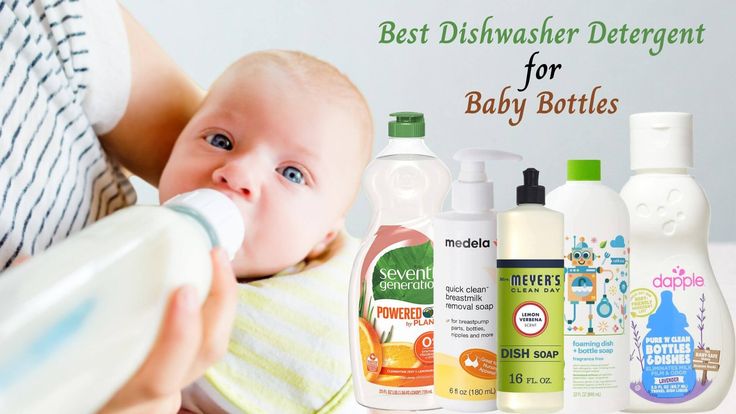 nine0003
nine0003
If a newborn is bottle-fed, then already after birth during the week he comes into contact with the bottle on average 42-49 times! Now it remains to calculate how many times a clean bottle will be needed at least until the child reaches the age of 5-6 months, and accordingly, how many times he will be exposed to various microbes if the bottle is suddenly washed out poorly.
Feeding bottle sterilization is recommended by pediatricians to protect against bacteria that cause infections such as gastroenteritis. nine0003
So, in order to protect the child from intestinal infections as much as possible, and sometimes to save his life, you already agree that sterilization is simply necessary. It remains only to familiarize yourself with the rules and choose the most suitable method.
Back to content
Should I sterilize - why and when?
Most pediatricians insist on sterilizing baby feeding bottles as a precaution before they are 4 months old. This is the age after which the child begins to roll over on his stomach on his own, move around a little and put everything that is within his reach into his mouth, so careful sterilization afterward may be useless. Some parents find this task tedious and difficult, so they stop spaying early. They justify their stop by saying that all precautions are unnecessary, given the mass of other objects of possible infection that are in the house, which we do not pay attention to, but which, one way or another, are in contact with the child. It is true that sterilization will indeed be in vain if you come into contact with the bottle without washing your hands with soap or if it is stored in an area far from clean. nine0011 Back to Contents
Some parents find this task tedious and difficult, so they stop spaying early. They justify their stop by saying that all precautions are unnecessary, given the mass of other objects of possible infection that are in the house, which we do not pay attention to, but which, one way or another, are in contact with the child. It is true that sterilization will indeed be in vain if you come into contact with the bottle without washing your hands with soap or if it is stored in an area far from clean. nine0011 Back to Contents
First Rinse or 4 Steps to Successful Sterilization
Parents often think it's enough to simply rinse the bottle under hot water immediately after use and then put it in the sterilizer. This is an erroneous delusion: milk residues, even if they are invisible to you, remain on the walls or at the bottom of the bottle or at the point of contact of the nipple with the neck of the bottle, where excellent bathing conditions are created for bacteria to multiply.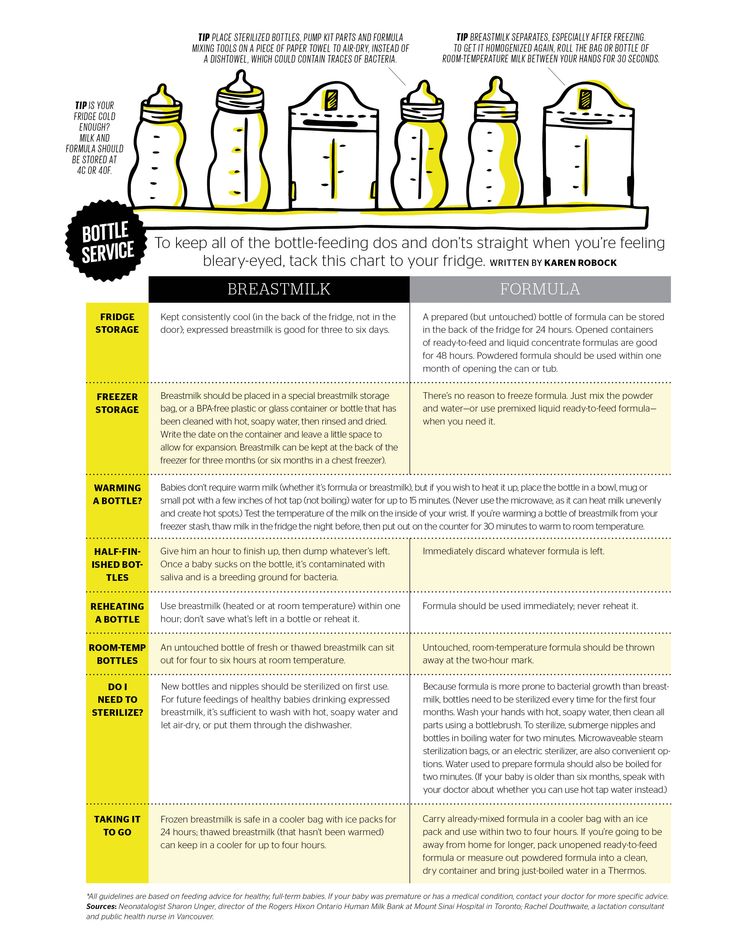 Therefore, after each use, it is necessary to thoroughly rinse both the bottle itself and the nipple and cap. And only then send it for sterilization, and no matter which method you choose hot or cold, boiling or steaming. nine0003
Therefore, after each use, it is necessary to thoroughly rinse both the bottle itself and the nipple and cap. And only then send it for sterilization, and no matter which method you choose hot or cold, boiling or steaming. nine0003
4 steps for successful and correct sterilization at home :
- Be sure to wash your hands with soap beforehand;
- Before sterilization, the main rule is to thoroughly rinse the bottle after each meal. You can wash it with any dishwashing detergent that rinses off well and a special brush;
- Follow instructions if using special sterilizer;
- After heat sterilization, you can store the empty bottle for 24 hours in the refrigerator or in a cold sterilizer with sterile solution. nine0049
Back to Table of Contents
Sterilization Methods - Which One to Choose
Specialty stores for children's products offer various types of sterilizers that have undergone various laboratory tests, including performance and efficiency. First you need to choose your preferred sterilization method:
First you need to choose your preferred sterilization method:
- Cold sterilization : sterilization time of half an hour or more. Such a sterilizer uses a sterilization tray and special tablets. nine0049
- Electric Hot Sterilization : Generally large enough to sterilize up to eight bottles at a time. The time spent on this procedure is about 10 - 15 minutes.
- Microwave Steam Sterilization : A time-saving device that can sometimes take less than 5 minutes to cycle. The sterilizer contains a reservoir containing water located at the bottom. Placed directly in the microwave. nine0049
Back to content
Hot sterilization
Hot sterilization means electrical sterilization, produced by a special device, which is a very practical method. However, do not forget about the methods mentioned below, like a microwave oven and others.
Electric sterilizers can sterilize up to 6 bottles and their accessories at the same time for about 8-15 minutes, depending on the brand and model.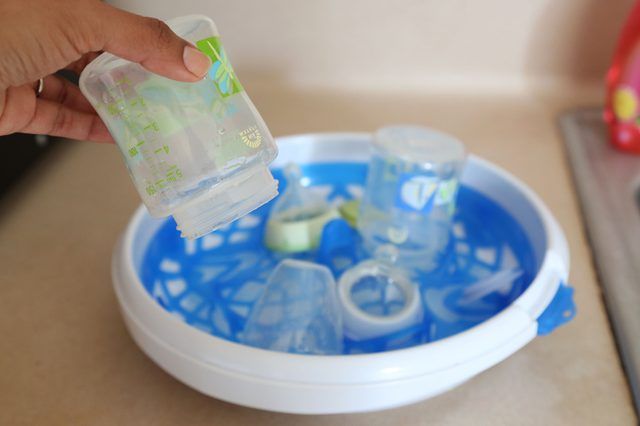 Larger models are designed for 9bottles and their accessories.
Larger models are designed for 9bottles and their accessories.
Advantages of such devices:
- automatic stop and sound signal at the end of the cycle, as well as the process carried out at very high temperatures;
- possibility to sterilize bottles of different heights;
- combination of baby bottle warmer and sterilizer;
- security, etc.
Some brands even offer programmable electronic sterilizers. nine0011 Back to Contents
Cold Sterilization
Cold Sterilizers operate on a chemical principle that is safe for children. Such devices consist of a tank filled with 4 to 6 liters of water for sterilization, depending on the model, and disinfectant tablets. We immerse baby bottles and nipples in this water, dissolve one or two special tablets and leave to sterilize for 30 minutes. The tray of this sterilizer holds up to 8 bottles.
Cold sterilization is the only sterilization method that allows sterilization of bottles and accessories after patient contact. The solution remains effective for 24 hours, so the bottles can remain there until they are used.
The solution remains effective for 24 hours, so the bottles can remain there until they are used.
Another advantage of using the machine is the granules, which are not very expensive and can be bought in many supermarkets.
These sterilizers work without electricity, which is especially convenient in the hospital, on the road, on vacation or anywhere else outside the home. In addition, some accessories such as teeth rings or small plastic toys that cannot be hot sterilized are ideally cold sterilized. Finally, this method will never ruin a bottle or pacifier. nine0003
Nevertheless, the method is not without its drawbacks: after sterilization, a residual smell of chlorine or an unpleasant taste of plastic is possible - this is due to the fact that soda hypochlorite is used in the tablets, which is safe for the child, but may be rejected by him.
Back to content
How to sterilize in a slow cooker (pressure cooker) or microwave oven
Some parents believe that there is no need to spend money on special sterilizers, but it is quite enough to do with the old "grandmother's" way.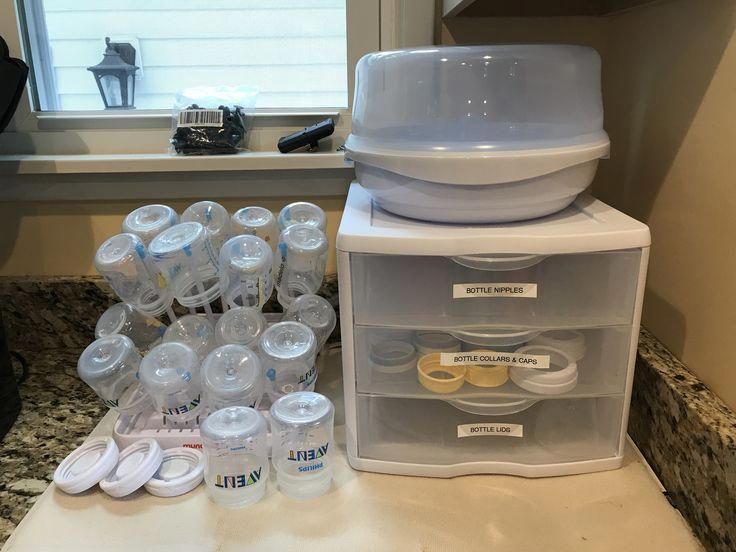 For this method, a large pot of boiling water is sufficient, in which bottles and pacifiers are immersed for 20 minutes. Now, instead of a saucepan, they use a slow cooker. nine0003
For this method, a large pot of boiling water is sufficient, in which bottles and pacifiers are immersed for 20 minutes. Now, instead of a saucepan, they use a slow cooker. nine0003
The method is, of course, good, but has its drawbacks:
- you can get burned;
- bottles must be cooled after sterilization;
- nipples are prone to distortion, after which they can only be thrown away, so it is better to keep them for about 10 minutes;
- time consuming…
Microwave and steam sterilization is an excellent method. The stores sell a special water tank dish topped with special devices to accommodate bottles and nipples. Convenient, fast and compact, the microwave sterilizer recreates the principle of an oven. Only 5-10 minutes and the heat treatment is done! nine0003
However, this method is not ideal, it also has its drawbacks. This sterilizer cannot sterilize glass bottles. Another disadvantage is the size, as 330 ml bottles will not fit into it.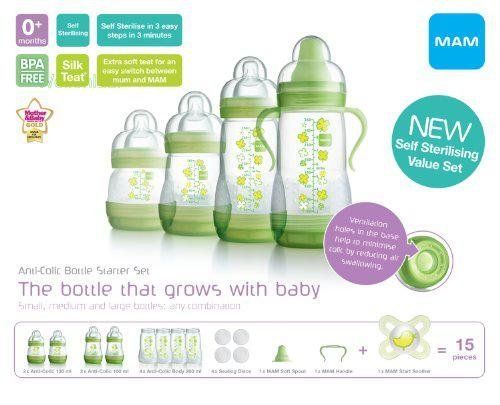
Dr. Komarovsky talks about sterilizing baby bottles in a video
Basic questions and answers
Question: Until what age should baby bottles be sterilized?
Answer: Pediatricians around the world recommend that bottles and accessories be sterilized before the child reaches the age of 4 months without fail. Up to 6 months at the discretion of the parents, the attending physician and the environment where the baby is. nine0003
Question: How often should bottles and pacifiers be sterilized?
Answer: After each application.
Question: How long does it take to sterilize bottles and teats?
Answer: In the article we described in detail the time for each method of sterilization, follow the instructions for your device.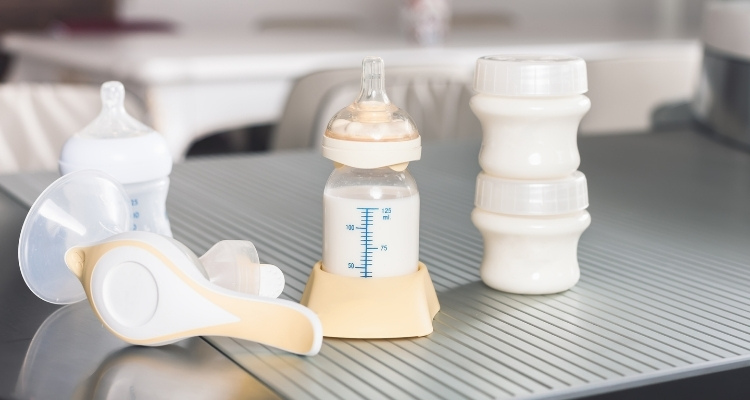 If you use an ordinary pan for sterilization, then it will take about 10 minutes for nipples, up to 20 minutes for bottles.
If you use an ordinary pan for sterilization, then it will take about 10 minutes for nipples, up to 20 minutes for bottles.
Question: How should sterilized bottles be stored? nine0010
Answer: This question is also answered in the text of the article. You can store the bottles in the sterilizer itself or in the refrigerator for a period of no more than 24 hours.
Q: How can I sterilize my breast pump?
Answer: Cold sterilization is the best way to sterilize breast pump, teether and other accessories. In other cases, see the instructions for use.
Back to Contents
Now you have all the keys and knowledge to help you choose the right way to sterilize bottles and teats for your baby. However, be careful not to overdo it, as excessive hygiene and sterilization can harm the development of the immune system, the child must be in contact with bacteria within reasonable limits. nine0003
HOW TO STERILIZE PHILIPS AVENT BOTTLES
Teats and bottles harbor millions of germs. They are not afraid of boiling water, soda and detergents. The only thing that kills them is hot steam, which literally dissolves bacilli with a probability of up to 99.9%. Porridge and milk keep longer. A formula-fed baby is less likely to get sick.
They are not afraid of boiling water, soda and detergents. The only thing that kills them is hot steam, which literally dissolves bacilli with a probability of up to 99.9%. Porridge and milk keep longer. A formula-fed baby is less likely to get sick.
So, mums, end your feeding with poorly washed bottles and learn how to disinfect them the way our grandmothers did. Only in a new way. nine0003
How to sterilize baby bottles
Washing with a brush or sponge is a must after every feeding. And it is better to sterilize in the evening or in the morning, in order to get rid of all pathogenic bacteria and not worry about the cleanliness of children's accessories.
When doing this, you must follow the safety rules: otherwise you can inadvertently scald or deform plastic dishes.
Below are three general guidelines for sterilizing baby bottles. nine0003
- The utensil must not be immersed in boiling water, otherwise it will soften and melt.
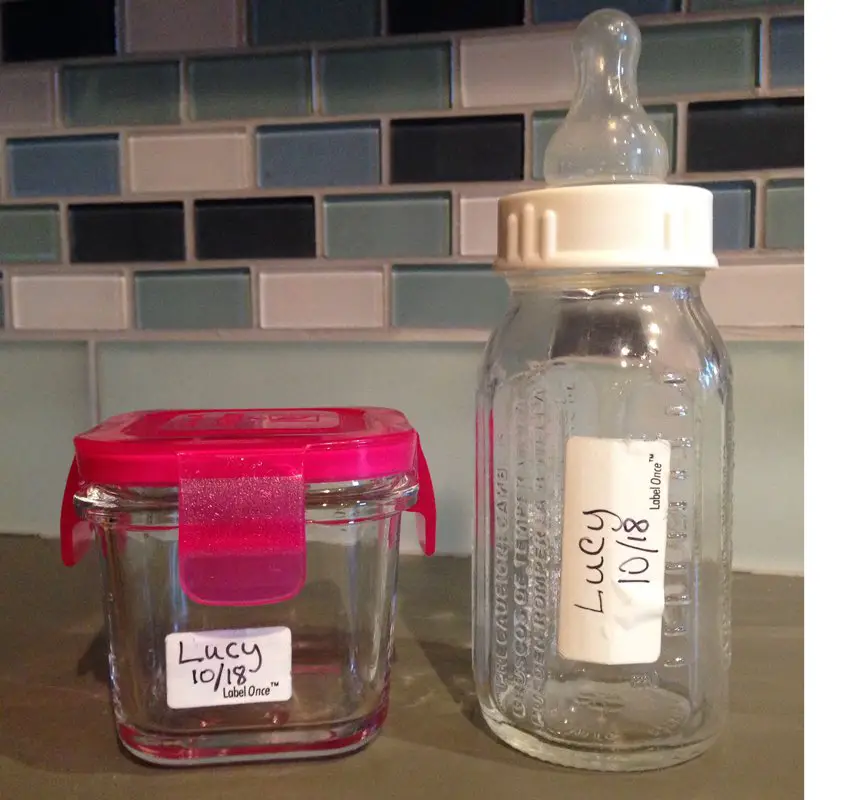
- Glasses and bottles are placed with their neck down: so that the steam cleans the inside, and the condensate flows down the walls into a bowl.
- Bottles must not touch the sides of the pot as they may melt and stick to them.
After sterilization, it is better not to remove the dishes from the container for about ten minutes. It should cool down to a comfortable temperature. And if you really need it, you should use tongs, oven mitts or a kitchen towel folded in several layers. nine0003
By the way: Baby utensils: how to choose - 4 key parameters to help
How to sterilize pacifiers for children?
Teats are sterilized in the same way as bottles, but with the base down - to steam not only the outer, but also the inner walls. And let the moisture drain.
Types of sterilization
Two types of sterilization are used for the treatment of children's utensils - steam and dry heat.
- In the first case, the vessel is steamed.
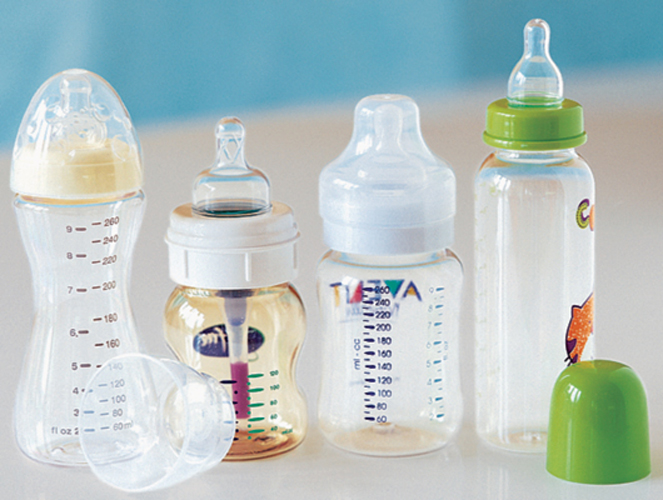 nine0049
nine0049 - In the second, washed and still wet bottles are heated in the oven, sterilizer, microwave, multicooker and even in the dishwasher, which supports steam treatment at 80+°C.
Life hack: how to steam bottles and other things with sterilization bags (such as Nuvita NV1087)
- Put dishes in food bags.
- Pour 60-70 ml of water into them.
- Microwave for 2-3 minutes.
The sterilization process is as simple as a copper penny. Evaporating moisture destroys pathogenic (and not only) microbes from various surfaces. Materials exposed to hot air and steam do not creak from cleanliness, but are sterile and safe for health.
In this way, not only nipples and bottles are disinfected, but also brushes, bowls, thermoses and cups like Avent SCF796/01 and so on.
Interesting article: When did the first baby stroller appear: 10 facts from history
Microwaveable
The microwave oven offers 3 sterilization options.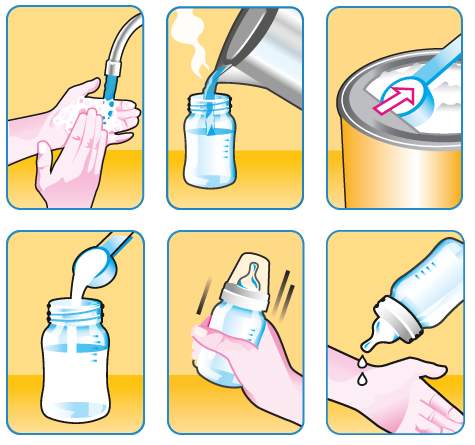 Not all of them are suitable for processing nipples.
Not all of them are suitable for processing nipples.
- Place the bottles in a glass or ceramic dish → fill it with water → cover with a lid → put the microwave on maximum power for 5-7 minutes.
- Pour water into the bottle 1-1.5 cm from the bottom → microwave for 3-5 minutes. The nipples will have to be washed separately.
- In the Nuvita type microwave sterilizer (NV1085), it is enough to put the container → pour water → click on the valve → set the device to work for 5-8 minutes. nine0049
Picking up a hot dish is easier with tongs or oven mitts.
Sterilization in the microwave gives its advantages and disadvantages, described in the table: the inner bowl of the multicooker. So that the saucepan does not smell like food, otherwise bottles or children's dishes will take over this smell. nine0003
The subsequent sterilization process in the multicooker is similar to microwave.
- Pour ≈ 1-1.5 liters of water into the bowl.
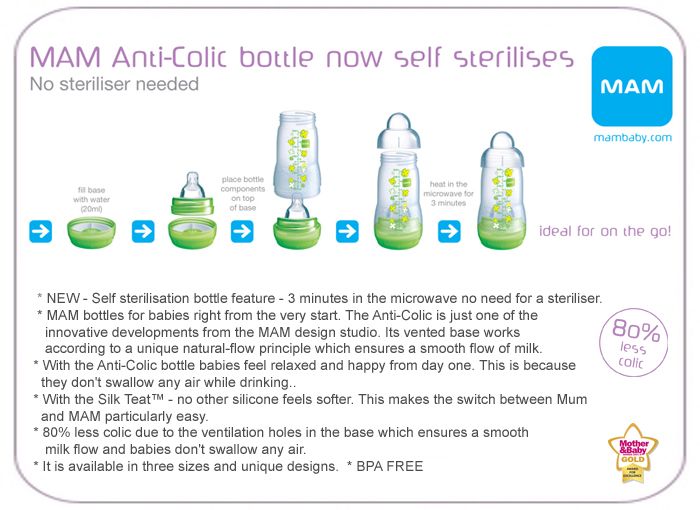
- Place the steam rack and place the bottles upside down.
- Seal the steam device hermetically.
- Set "Steam" mode to 15 minutes or "Sterilize" mode.
- Remove the dishes and cover with a towel to cool completely.
This method also has its pros and cons. nine0003
Sterilizer
Children's sterilizer is an electrical device for cleaning utensils. Works carefully, the bottle will not crack due to overheating.
Everything is calculated with medical precision in the method of steaming with a sterilizer. The device holds up to 6-8 bottles and the same number of nipples. A great example of such a device is the Philips Avent 3-in-1 steam sterilizer. It is ideal for a family with several kids.
How the device works is as simple as it gets. It consists of step by step actions. nine0003
- Pour cold water into the tank (how much is indicated in the instructions).
- Place pre-cleaned bottles in special niches.
 This should be done upside down.
This should be done upside down. - Close cover.
- Switch on the sterilizer for 7-15 minutes.
- Allow the device to “cool down” for 5-7 minutes. This is necessary so that you do not accidentally burn yourself with steam.
If the use of the bottles "does not burn", then they can be left under a closed lid - so they will be sterile for another 4-5 hours. If you need to get one of the bottles, take only it, and close the rest of the clean bottles with lids. nine0003
Before putting the dishes into the sterilizer, make sure they are clean. The device removes germs and odor, but does not cope with pollution.
Read: Top 5 Best Convertible Strollers
Avoid Sterilization Mistakes: 4 Common
Many parents make basic mistakes that are best addressed in advance.
1. Unwashed or poorly washed utensils
Leftover food provokes the reproduction of microflora and can cause stomach problems in a child.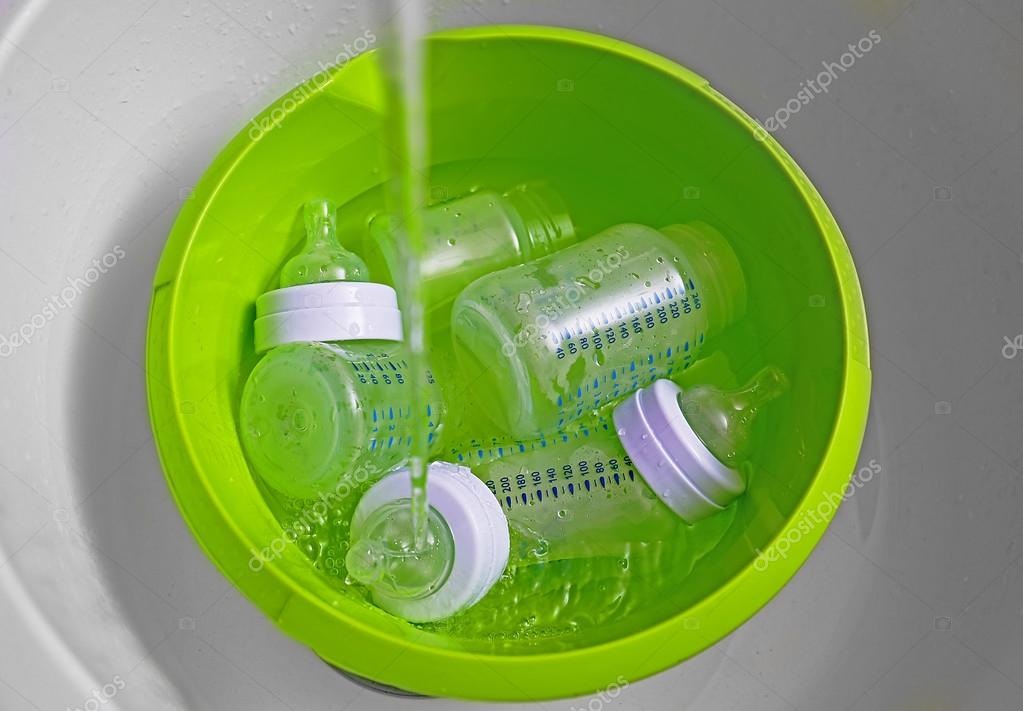 And sterilization does not wash out food residues - only cleaning can do this. nine0003
And sterilization does not wash out food residues - only cleaning can do this. nine0003
2. Pot boiling
You can't boil! The maximum allowable temperature for children's utensils is 110 ° C. And often it is even less. Otherwise, the bottles may melt.
3. Installation in a steamer and microwave without water is contraindicated
The device will burn, and the dishes will melt.
4. Sterilization of dishes with visible chips and cracks
Microbes accumulate and multiply in them, which can cause diseases of the gastrointestinal tract and not only. nine0003
Note: TOP-10 strollers with inflatable wheels
Pros and cons of sterilization
Each parent has his own opinion about sterilization, but there are definitely no indifferent to this issue.
Arguments "For" and "Against" are summarized in the final table:
So when choosing "to sterilize or not", everyone decides for himself.
